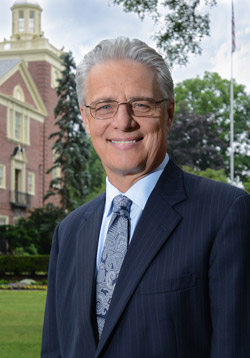
Download Image: Web
The idea of “free college” has become prominent on the American political landscape in recent years. A central theme of Sen. Bernie Sanders’ presidential campaign proclaimed, “It’s Time to Make College Tuition Free and Debt Free.” In 2017, the New York State legislature approved a proposal from Gov. Andrew Cuomo to create an Excelsior Scholarship that promised tuition-free four-year college for middle class students. Other states and localities have also introduced proposals that promise free college. In 2018, Rep. James Roebuck introduced the “Pennsylvania Promise,” a proposal to provide free tuition and fees to Pennsylvania students attending a community college or one of the fourteen state system universities.
The political phrase “free college” is compelling and appealing, especially in the context of a public narrative that claims both that the cost of a college education has made it an unattainable dream for people and that those who attend college often graduate with crushing debt. The public policy framework that informs the idea of free college, however, is inconsistent with what has been the fundamental public policy principle that has guided the role of government in the American system of higher education. In particular, government has sought to expand access and choice and has eschewed incenting students to choose public higher education over the private sector. The conflicting approaches can be framed as “free college” and “free choice.”
Since President Roosevelt signed the GI Bill of Rights in 1944, governmental financial aid (both loans and grants) has supported the ability of students to choose both the institution they wish to attend and an academic program of study. The 1972 Reauthorization Act affirmed the principle that government would provide financial aid and support student choice; it created the Pell Grant program and allocated over $200 million in funding. Pell grants were followed by Stafford loans, and by 2010, one third of American undergraduates had accessed one or both programs. Today, the Pell and Stafford programs provide more than $100 billion dollars in annual assistance to students pursuing a college degree.
Residents of the Commonwealth of Pennsylvania also have state-backed grants available to them. Students whose annual adjusted family income is no more than $85,000 can access PHEAA grants, and students from middle class families can apply for Ready to Succeed Scholarships (RTSS). The PHEAA program provides almost $400 million in annual grants, while RTSS has a $5 million budget. Both programs allow students to choose where to attend college and do not restrict funding to either the public or private college sector.
By directing financial assistance toward students, federal and Commonwealth legislators have recognized that private higher education is a unique asset of the American system. They have made it possible for students to use public assistance to attend one of the thousands of private colleges and universities that dot the American landscape as well as public institutions.
Government assistance based upon the principle of free choice has been financially important to Lycoming College since it became a four-year institution in 1947. The incentive to attend college built into the GI Bill spurred a rise in college enrollments nationwide and made it possible for the newly named Lycoming College to succeed as a four-year institution. Today, 43 percent of the Lycoming student body are eligible for Pell Grants and about 80 percent access the Stafford loan program. Together, the two federal programs bring $8.6 million in revenue to the College, and another $1.3 million comes from the Pennsylvania programs. Government support for higher education makes it possible for Lycoming College to continue its historic mission of creating opportunity.
Similar to New York State’s “free tuition” program, Roebuck’s proposed Pennsylvania Promise would restrict student choice because it would only provide funding if students attend certain public institutions. This provision fundamentally alters the historic role of government in supporting higher education. It would create an unequal playing field where wealthy students would have the freedom to choose the college that best meets their needs and seems most likely to promote their success, but less affluent students would be pushed into the public sector. Given that private colleges generally graduate first-generation students at higher rates than the public sector, current free college proposals would represent a step backwards in expanding access. In addition, free college proposals are also certain to have a detrimental budgetary impact on private institutions such as Lycoming.
As a college president, I strongly favor both expanding access to higher education and taking steps to keep college affordable. Lycoming College and the independent college sector in Pennsylvania have admirable track records in promoting both goals. Similar to Lycoming, Pennsylvania’s private colleges enroll nearly one-half of all Pell-eligible students and graduate them at higher rates than do the public systems. Moreover, the cost of attendance for the average student receiving financial aid at the Commonwealth’s independent colleges has actually gone down over the past decade.
Rather than pursue ill-conceived free college proposals, I would advocate that federal and state legislators should look to expand funding for existing programs like Pell, PHEAA, RTSS, and Stafford loans. We should preserve student choice, expand equal access, and support, rather than undermine, independent higher education.
Kent C. Trachte, Ph.D., is the 15th president of Lycoming College.